| |
Tennessee’s Reelfoot Lake: Where eagles soar in winter
By Tom Adkinson
January 6, 2023
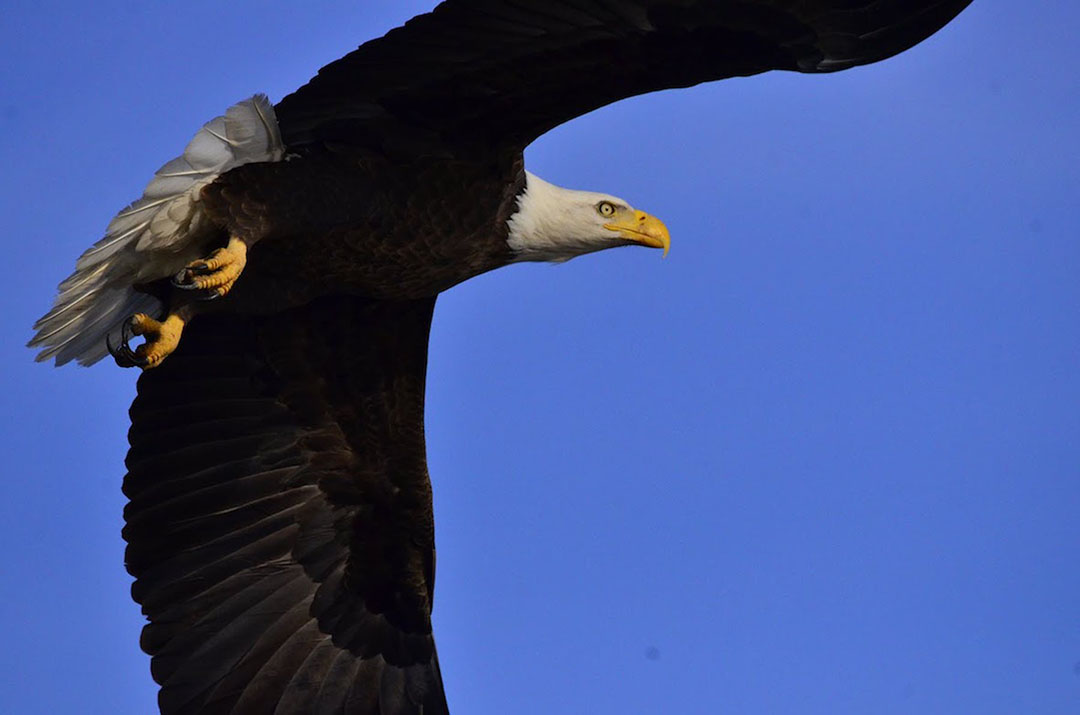
Eagle-seeking tourists dream about capturing a photo of a mature bald eagle against a blue winter sky. Image by David Haggard
|
TIPTONVILLE, Tenn. – Fishing and hunting guide Cody Rodriquez usually cruises for crappie or watches for waterfowl, but come January and February, he has another quarry.
He trades fishing rods and shotguns for binoculars and cameras on trips to put his guests within photo range of bald eagles at Reelfoot Lake in the far northwest corner of Tennessee.
A number of these distinctive raptors, America’s national symbol, reside around Reelfoot Lake, but their population grows dramatically in winter. A few thousand eagles come south from northern homes to dine on the millions of ducks, snow geese and other waterfowl that also are winter visitors.
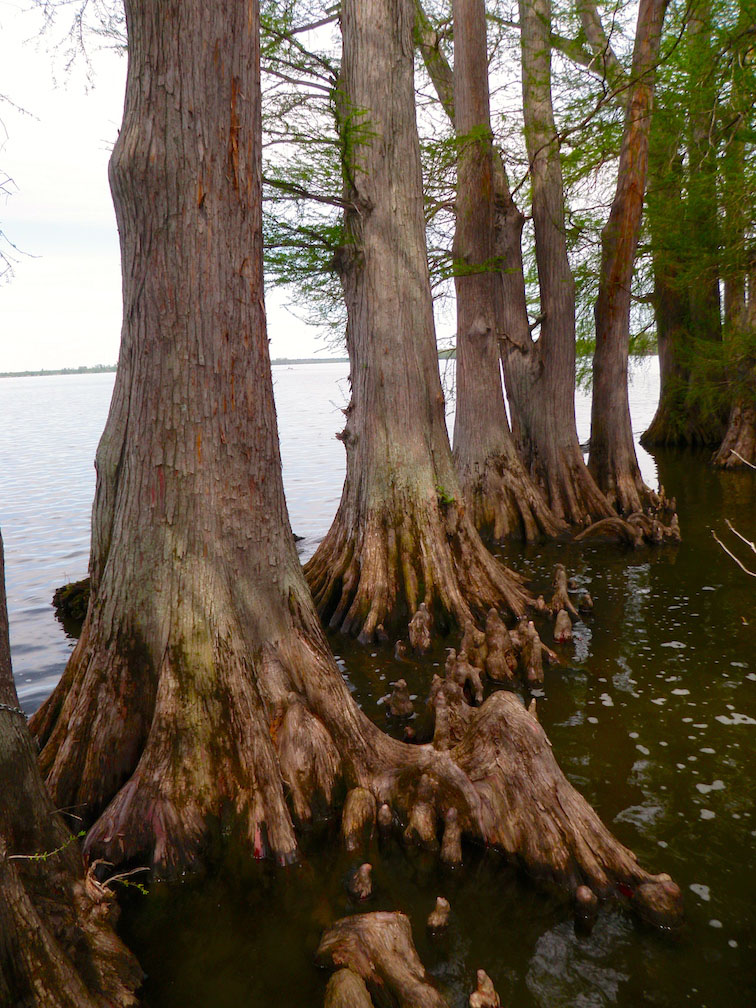
Distinctive-looking cypress trees surround Reelfoot Lake, which was formed by earthquake action in 1811-1812. Image by Tom Adkinson
|
In recent decades, the eagles have attracted human admirers who to see them perched in the cypress trees that surround the lake or in flight against a blue winter sky. Even better is seeing an eagle snatch a fish from the lake or engage in a chase with an osprey that won the race to a fish.
Human activity has grown to such a level that eagle season now is a major tourism event. Winter tourists provide employment for guides such as Rodriquez, put guests into rooms at the Blue Bank Resort and other properties and inspire the Reelfoot Lake Eagle Festival.
The 2023 festival is Feb. 3-5, and activities are concentrated at Reelfoot Lake State Park. In addition to festival programs about eagles, the park offers bus and van tours throughout January and February. Rodriquez and other guides (Rodriquez estimates there are at least 15 others) take bundled-up visitors out on the lake.
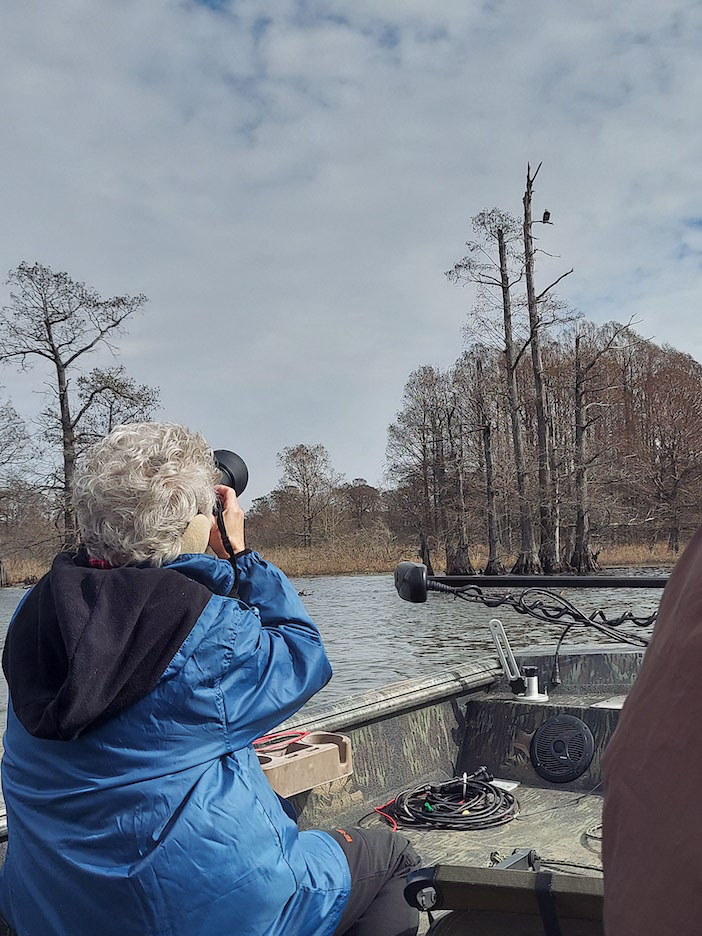
A Bent Rod Guide Service client lines up a shot of a bald eagle that is perched high in a cypress tree. Image by Cody Rodriquez
|
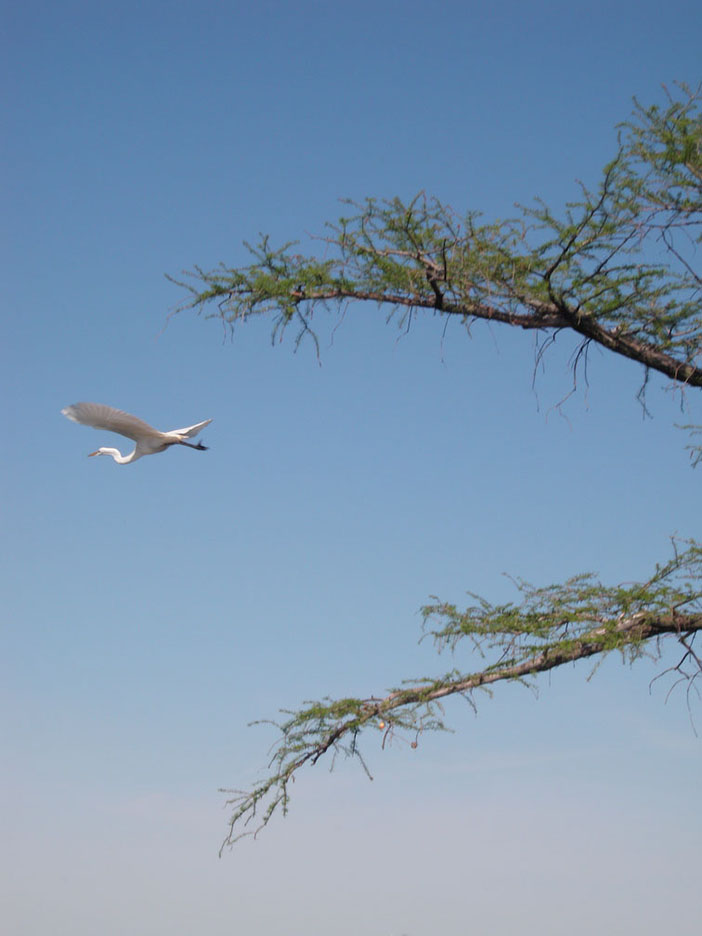
Egrets, snow geese, moorhens, white pelicans and ducks add to the bird count on eagle trips at Reelfoot Lake. Image by Tom Adkinson
|
“I’ve never had an eagle tour that didn’t see eagles,” Rodriquez said, adding that ospreys, herons, egrets, cranes, ducks, moorhens and white pelicans add to a day’s bird sightings. Rodriquez is lead guide at Bent Rod Guide Service.
Eagle tourism at Reelfoot Lake is a modern phenomenon, especially notable because bald eagles almost disappeared from the lower 48 states in the 1960s.
The thousands upon thousands of nesting pairs in the lower 48 states declined to 417, a reality that helped lead to passage of the Endangered Species Act in 1973.
The population decline was because of DDT, an insecticide that got into the food chain. DDT washed off of farm fields and into waterways. It got into fish and ultimately into eagles. It weakened eagles’ eggshells to such a degree that hatches failed.
The banning of DDT – and legislation that protected nests and habitats – led to a gradual return of eagles.
In the mid-1950s, there were 14 eagle nests around the lake, according to Warren Douglas, a Reelfoot Lake State Park ranger. That declined to one nest in 1961, the last anywhere in Tennessee.
Douglas said there were no eagle nests at Reelfoot Lake from 1961-1981, but a few eagles would arrive for winter. Word spread, and the state park began offering eagle tours in 1975.
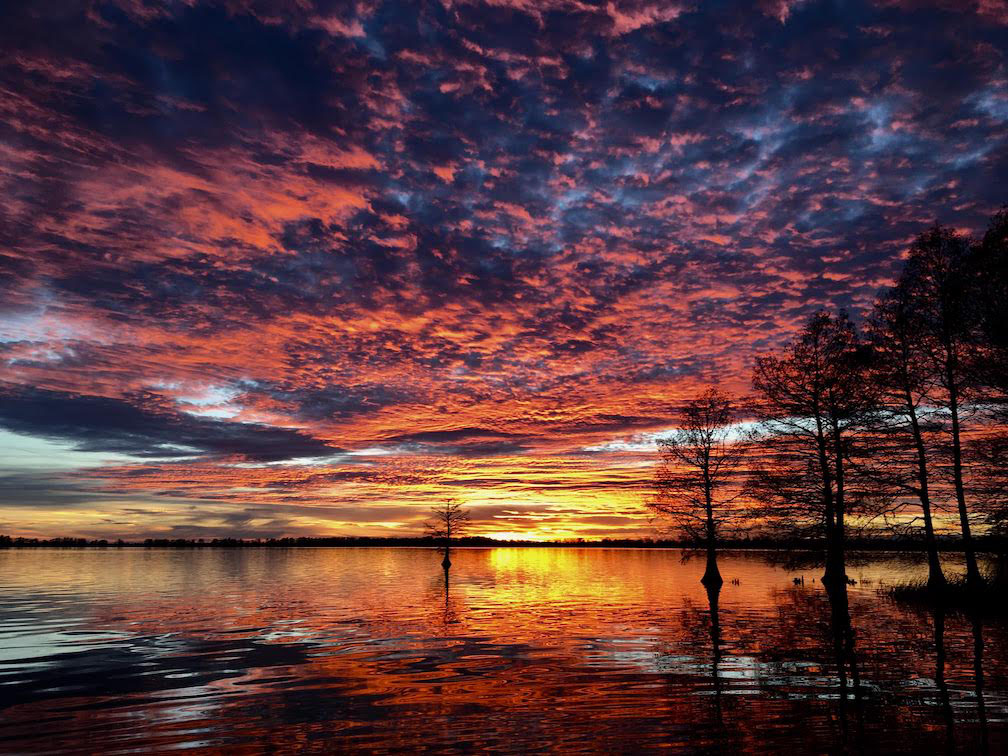
A setting sun, silhouetted cypress trees and multi-colored cloud formations create a dramatic scene at Reelfoot Lake. Image by David Haggard
|
A hacking program (the human-assisted hatching and rearing of eagles) began at Reelfoot Lake in 1981. The effort involved various federal agencies, state universities and Tennessee state parks. The hacked eagles saw Reelfoot as home, and some established residence as Tennesseans.
“There are about 40 nests on the lake and about 150 in the region now,” Douglas said, noting that the impressive birds can live 20-30 years.
The bonus to an eagle-watching trip to Reelfoot Lake is learning the lake’s history. It is Tennessee’s only natural lake – natural in the sense that earthquakes in the winter of 1811-1812 caused a cypress swamp to sink below the level of the nearby Mississippi River, which flowed backward to fill up the basin that was created.
Trip-planning resources: Reelfoot Lake State Park, Reelfoot Tourism, Blue Bank Resort and Bent Rod Guide Service
(Travel writer Tom Adkinson’s book, 100 Things To Do in Nashville Before You Die, is available on Amazon.com.
|



